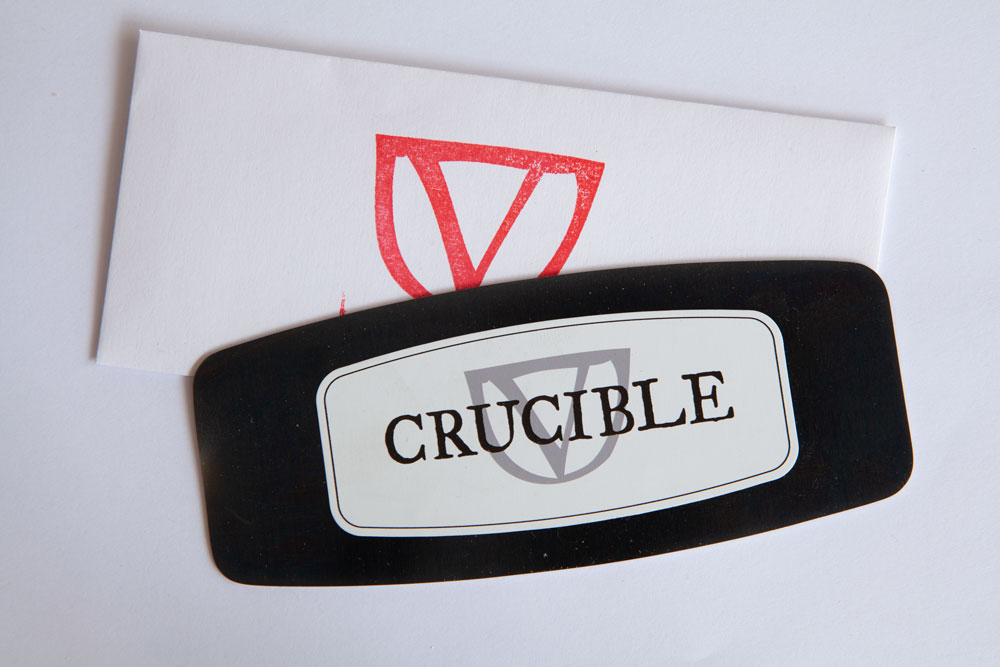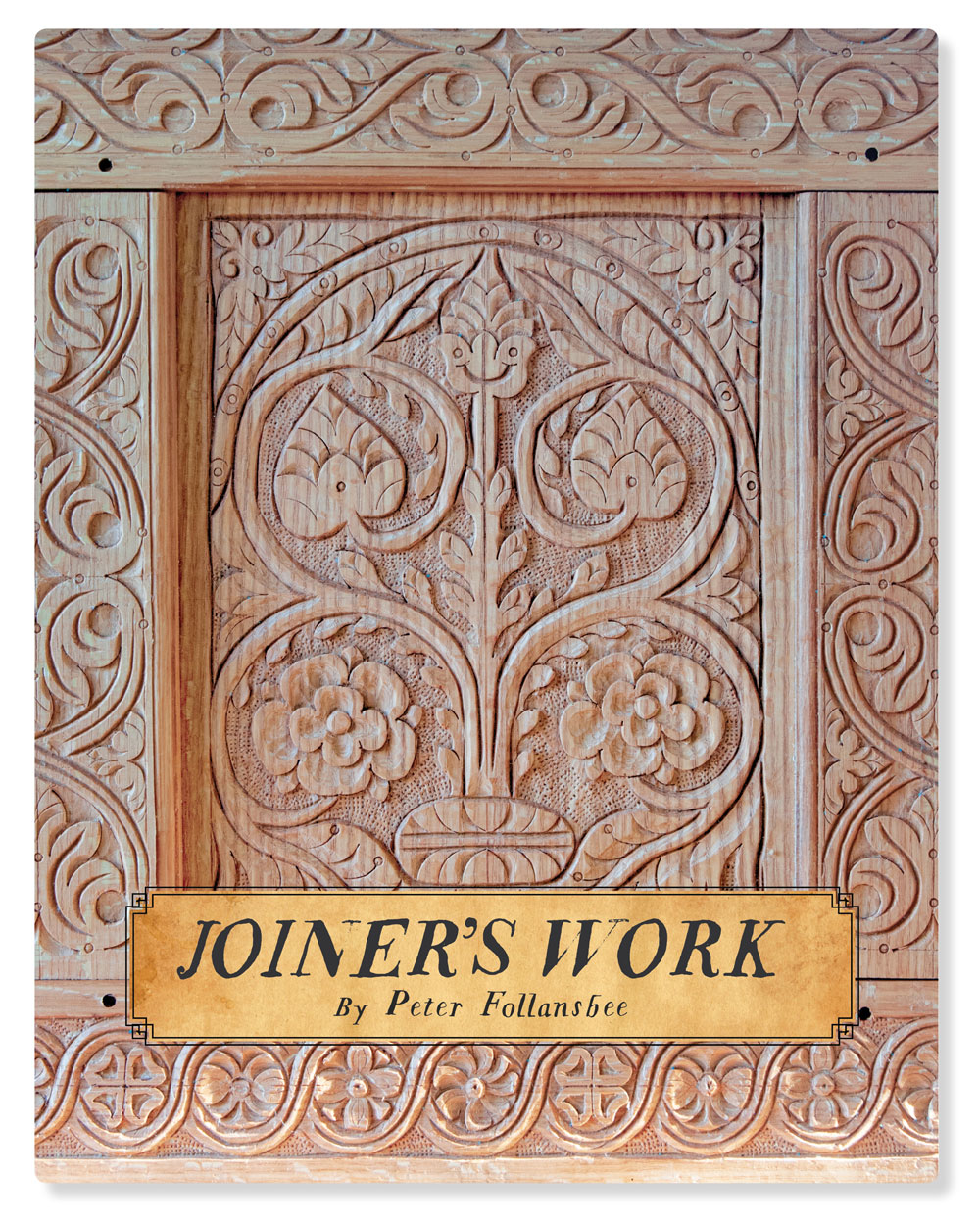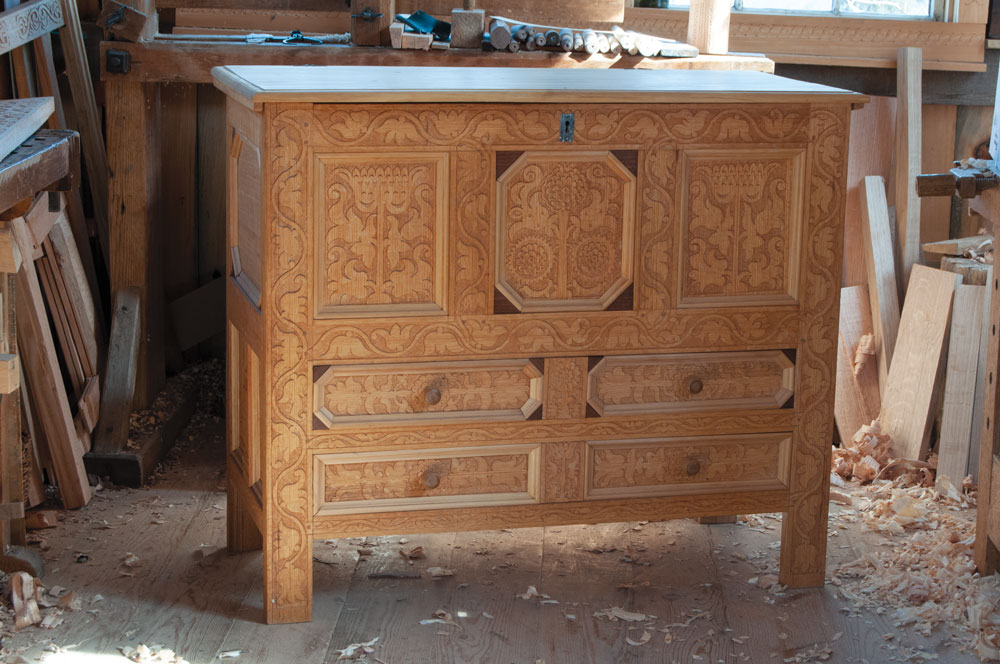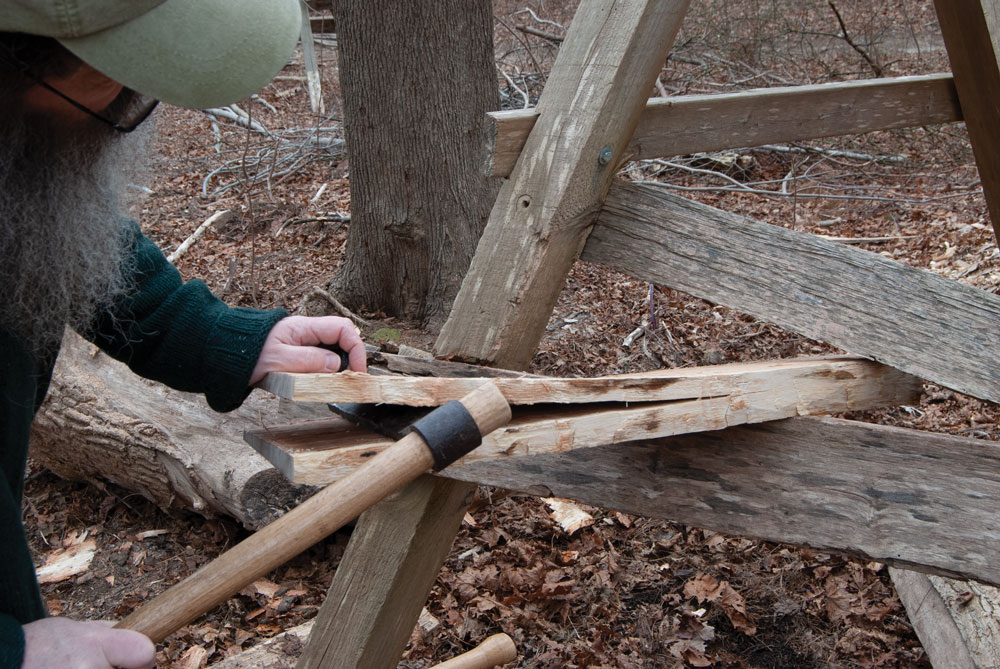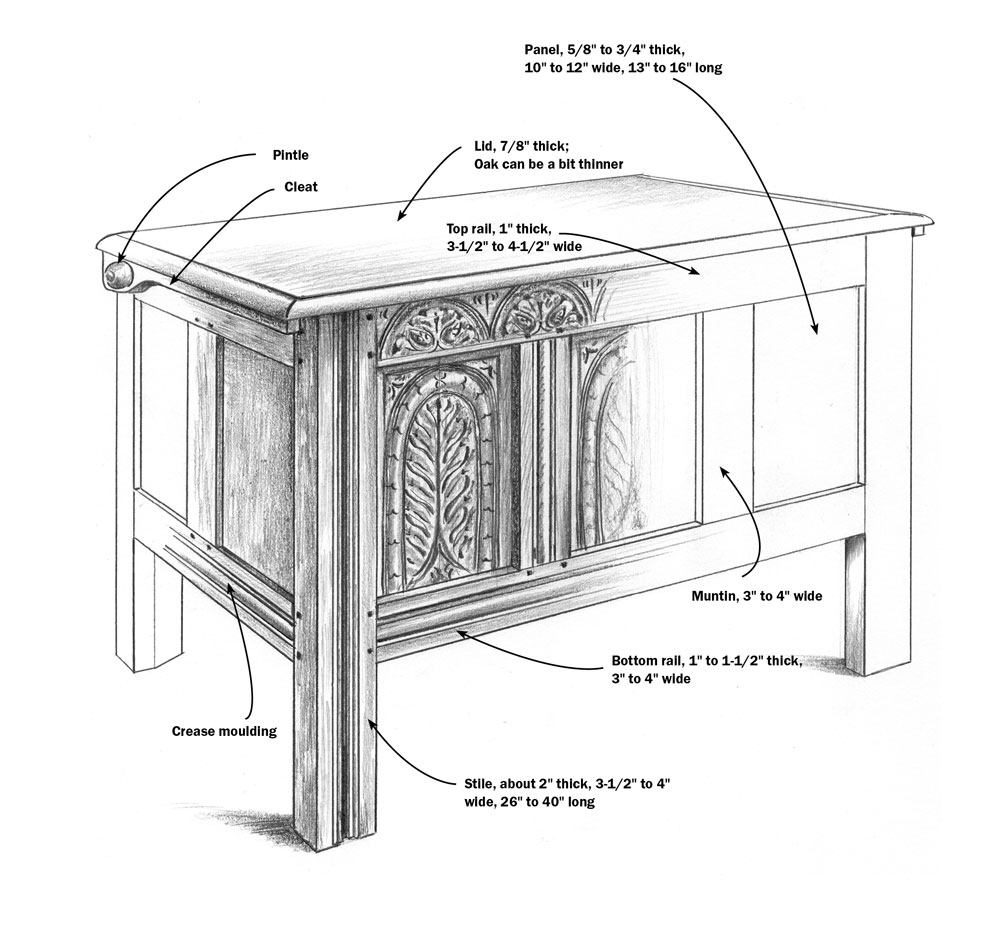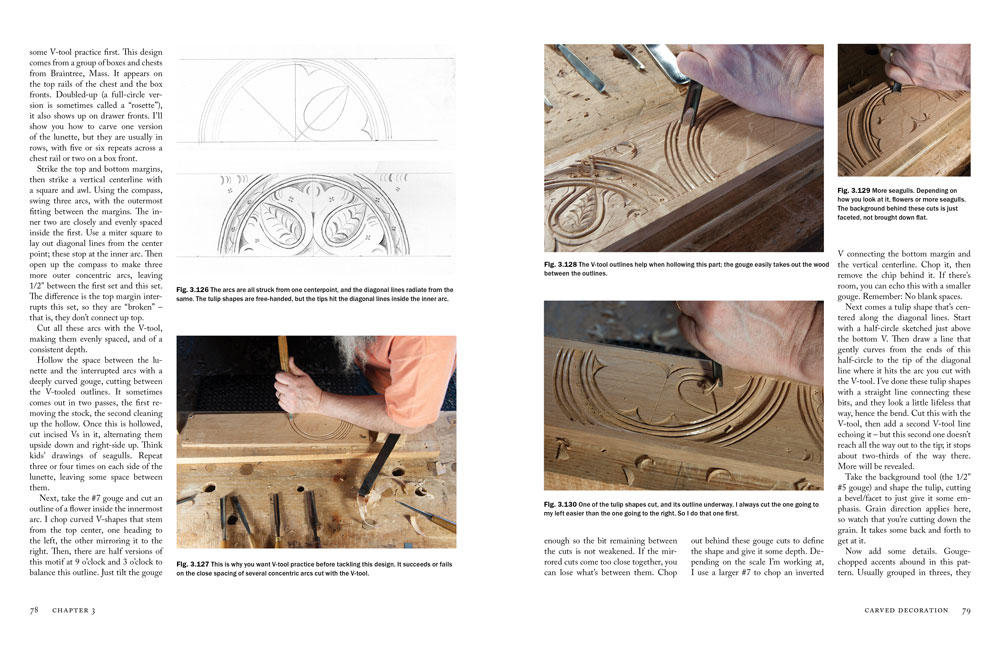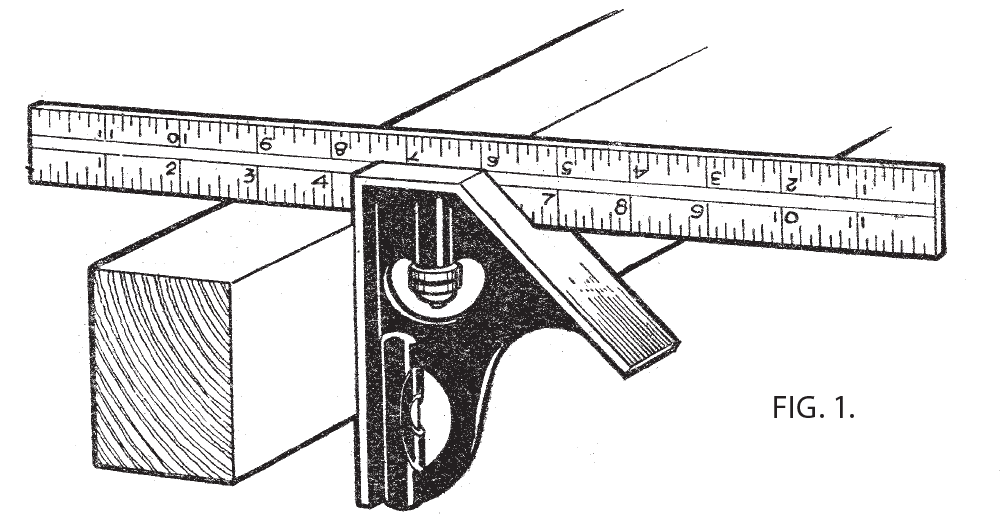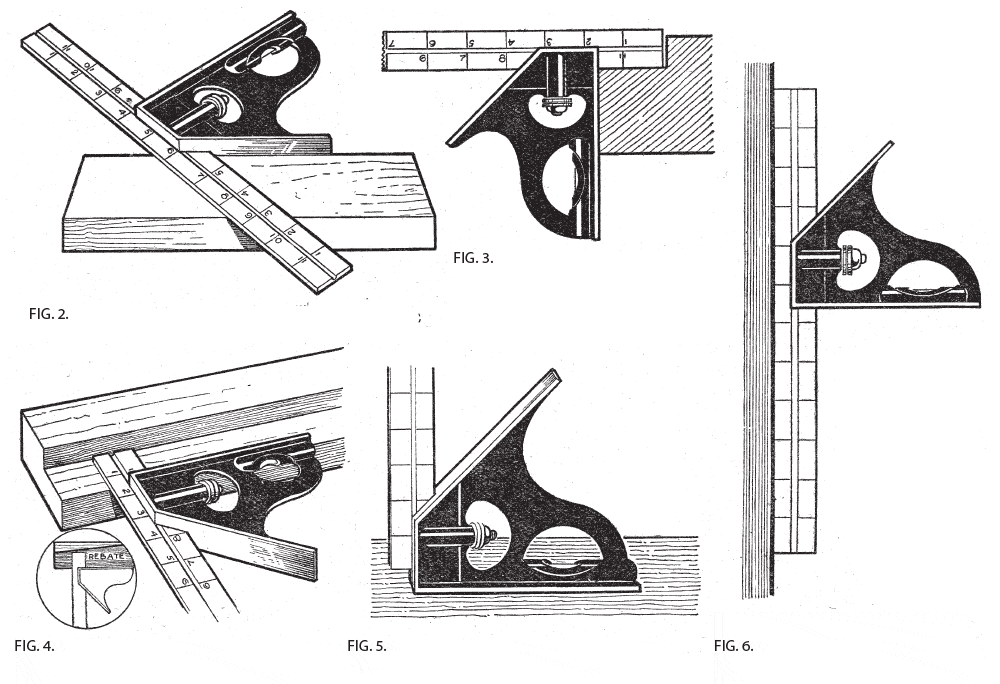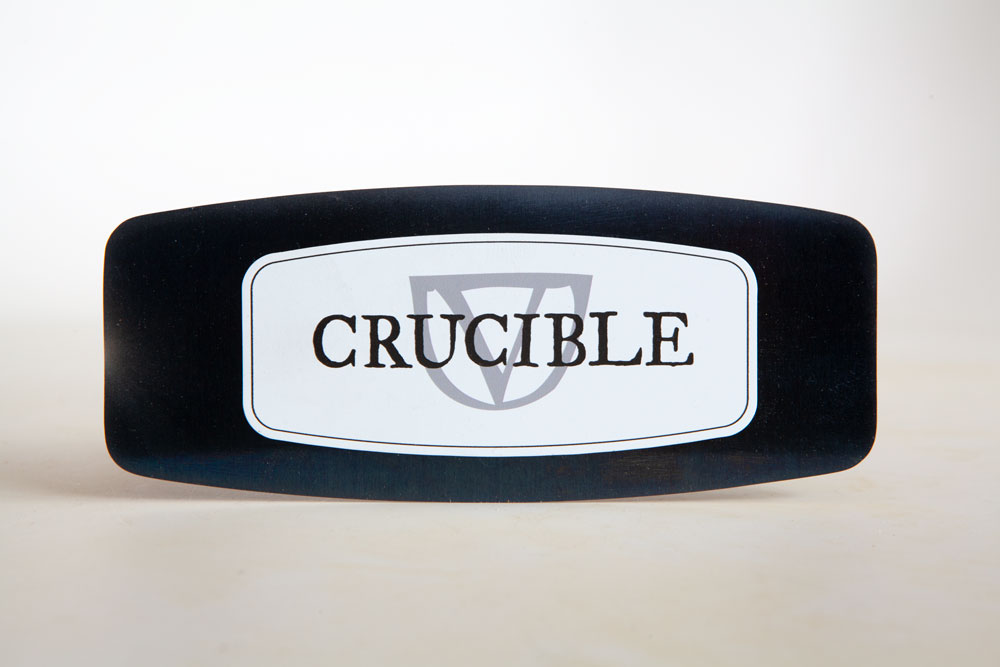
Note: In the next day or two, we will release our new card scraper over at Crucible Tool. In preparation for the release, I am preparing a lot of instructional material, including a video and a photo tutorial of how I sharpen a card scraper. You might find this helpful. You might not.
I’ve never met two people who sharpen their card scrapers using identical methods. As a result, there is more misinformation about sharpening card scrapers than sharpening any other woodworking tool. And that is saying a lot.
The following technique is based on 20 years of daily practice and a decade of research into historical methods. I won’t bore you with the spreadsheets and the bibliography. Instead, I’m going to explain the process using as few words as possible.
For those of you who learn using video information, I’ve also made a short film that will be released soon.
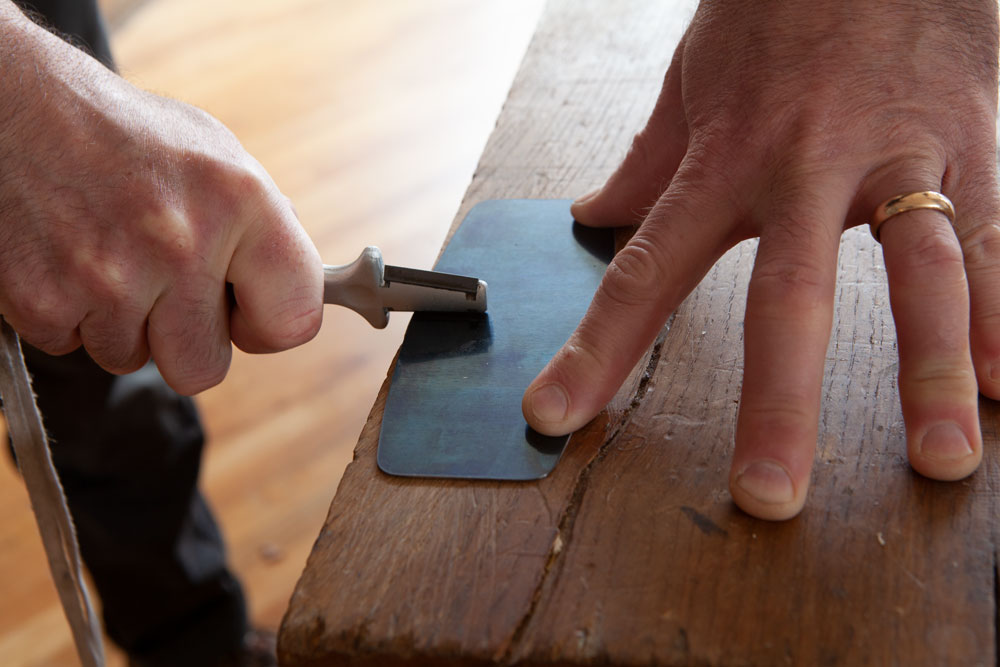
Step 1: Remove any Existing Burr or Hook
The first step for me is always – always – to burnish the faces of the scraper to eliminate any existing burr or hook. The burr could be the result of manufacturing. Or it is the remnants of the hook on the tool you’ve been using.
Place the scraper down flat near the edge of the workbench. Press the burnisher dead flat on the scraper. Press down – hard! – and glide the burnisher across the face of the tool. Five or six good strokes will do. Repeat on the other three faces.
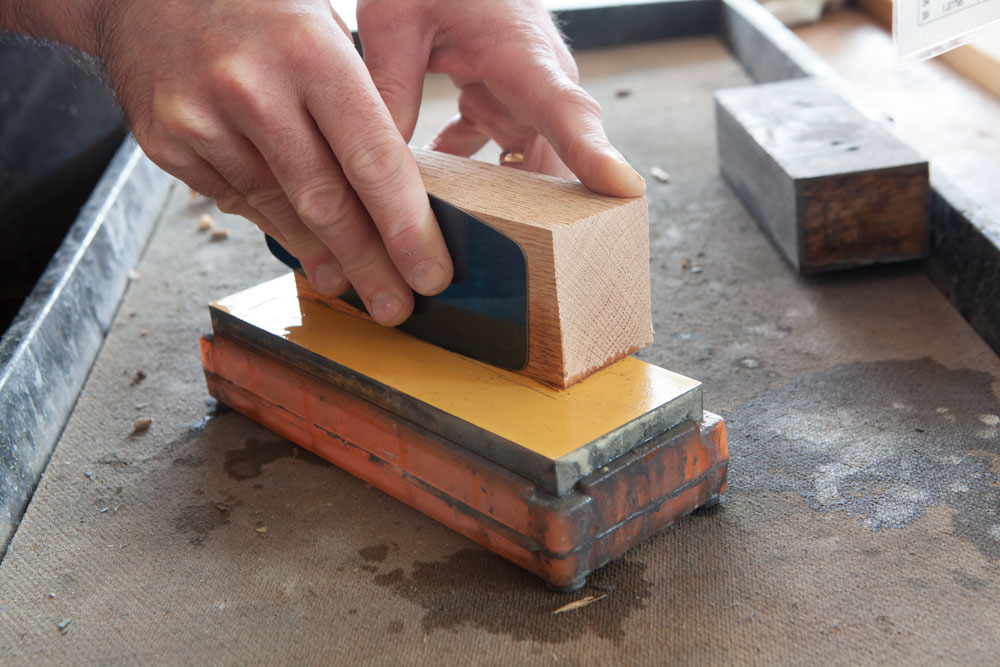
Step 2: Stone the Narrow Edges
To get perfect 90° corners, use a block of wood as guide and stone the long edges of the tool. Shift the block of wood around so you don’t wear a groove in your stone. Use the sharpening stone that you use to begin your typical honing process (a #1,000-grit waterstone or a soft Arkansas oilstone, for example). Seven or 10 strokes should be enough to stone away any extra metal. (Note: There is no need to hone the short ends of the scraper as these don’t cut.)
If, however, this is a new scraper, you might need to stone the edges on a coarse stone for a few minutes to ensure the edges are dead 90° to the faces and consistent. Future stonings will go faster once the tool is set up.
Repeat this process with the block of wood on a polishing stone, such as a #5,000-grit waterstone or a hard Arkansas oilstone. Look closely and continue the work until the edge is consistently polished. The first time you do this on your tool it might take a few minutes. Subsequent sharpenings will require only 10 strokes or so.
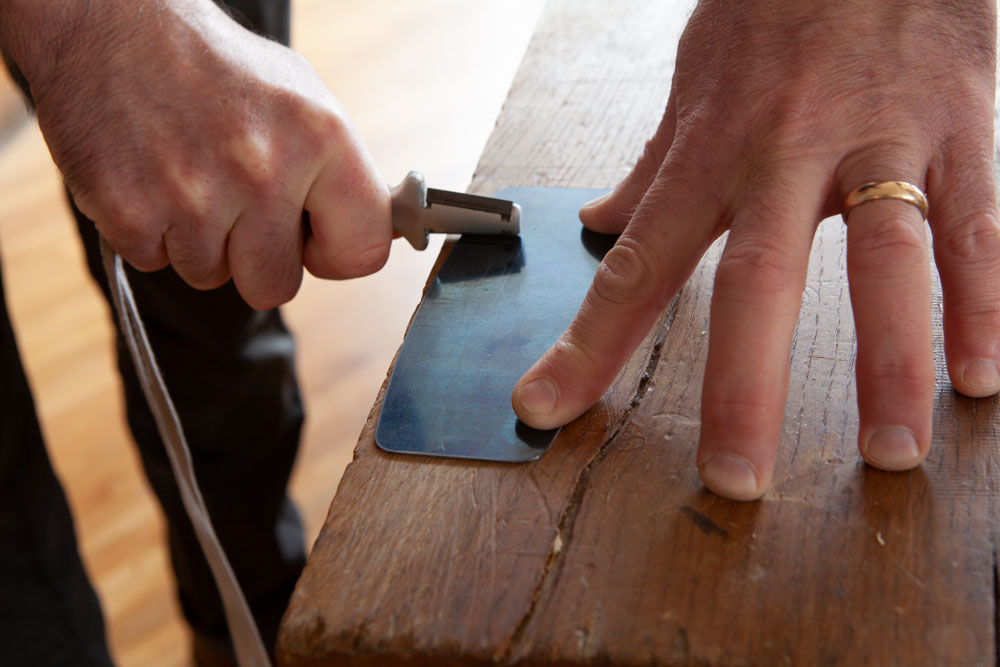
Step 3: Burnish the Faces
Wipe a little oil on the scraper and the burnisher. Place the scraper flat on the bench again and repeat the same burnishing process you used to remove the burr. Remember: Use hard downward pressure (yet the burnisher should still glide across the face of the tool).
This burnishing polishes the face of the scraper (much the way a hard bone will burnish soft wood) and push a little steel up on the tool’s edge. This step improves the durability of your hook and makes the hook easier to turn.
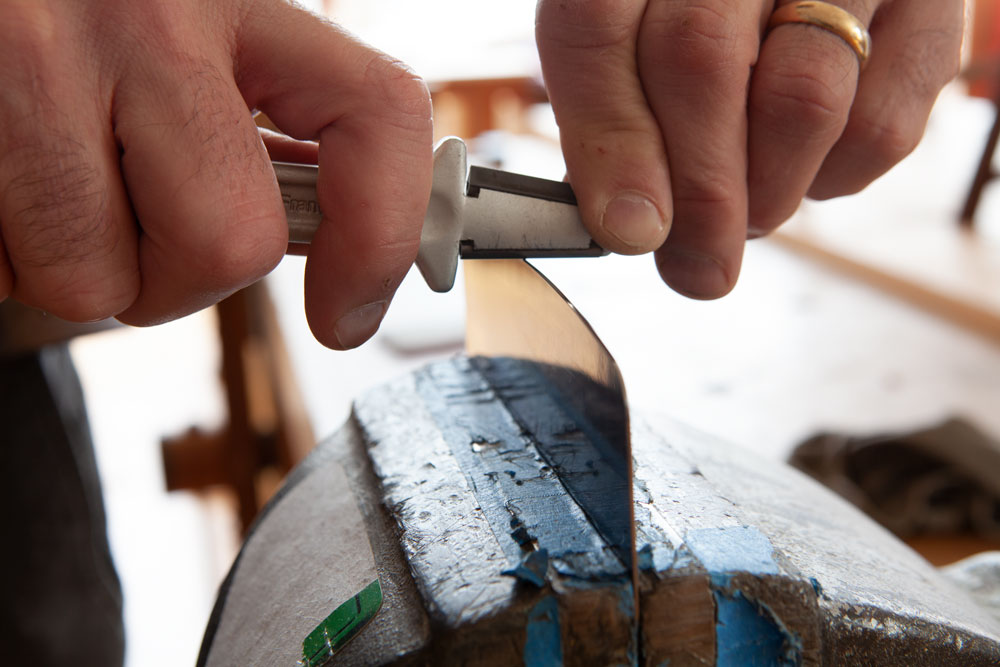
Step 4: Burnish the Edges
Secure the scraper in a vise with one edge upright. Wipe a little oil on both the scraper and the burnisher to make your work easier. Hold the burnisher parallel to the floor and burnish the edge with moderate downward pressure (a bit less than you used on the faces). Five or six smooth strokes will do.
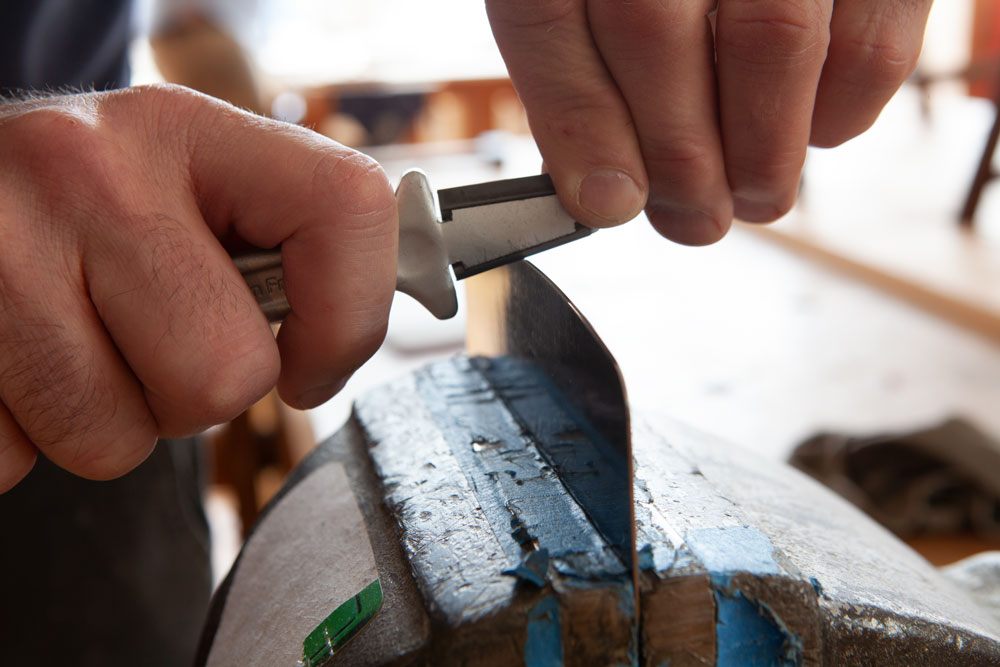
Tilt the burnisher about 5° to the right and burnish one corner of the scraper with five or six smooth strokes. Run your fingers up the scraper to feel if you have turned a hook. The hook is slight and subtle, much like the burr you turn on the backside of a chisel when sharpening it.
If the hook is not there, repeat with more strokes with the burnisher tilted at 5° to the right until a hook appears. Try adding more downward pressure to see if that helps.
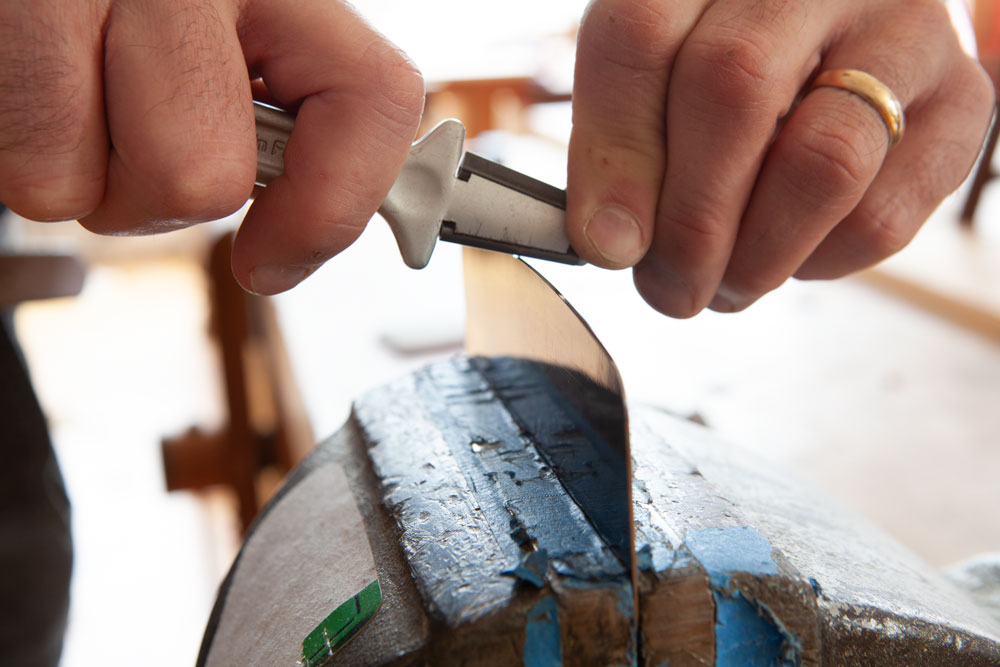
When you have a hook, tilt the burnisher 5° to the left and repeat the burnishing process for the other corner. When you have two good hooks, flip the scraper over in the vise and repeat Step 4 for the second edge.
Clean the scraper with an oily rag and get to work. To improve the longevity of your burr, store the tool in a cardboard or paper envelope. The hook is as fragile as the edge on a paring chisel.
— Christopher Schwarz
